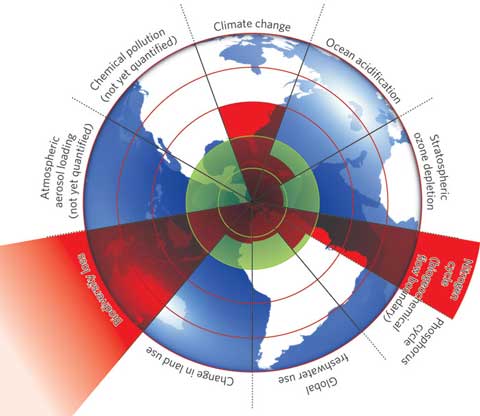 “We are very worried because we have no water. Half the people of this community have already left. Those who remain are struggling with the lack of water.”
“We are very worried because we have no water. Half the people of this community have already left. Those who remain are struggling with the lack of water.”
Those are the words of a villager in a small Bolivian village called Khapi which is suffering from the effects of retreating glaciers in the Andes. A BBC news report explains how it is for the villagers. Over the past 10 or 15 years, changing weather patterns have led to irregular water flows – the streams become torrents or dwindle to just trickles. “Our crops are dry now, our animals are dying; we want to cry.”
There are only 40 families in the village, but they’re ready to take their case to international forums. One of their leaders is Alivio Aruquipa (pictured):
“For the past two decades, we, the people from the Andean regions have been suffering because of the greenhouse emissions from the developed countries. If they don’t stop our glaciers will disappear soon. We want those countries to compensate us for all the damage they have done to nature…
“We don’t know how to calculate the compensation because we are not professionals, we are simply farmers. But we would like assistance, and then to receive some money and, with that money, to build dykes to store the water, improve the water canals.”
Hot Topic carried a post last November on the necessity of adaptation in Bolivia, following an Oxfam report. The BBC news item is another example of the increasing body of evidence which bears out predictions of likely impacts of climate change. It will be discounted by some as anecdotal but there comes a point where the sheer volume of converging stories means they deserve credence.
The call for compensation is a just one, and rightly part of the price we should pay to assist poorer people already suffering the effects of human-caused climate change. In some respects it is in lieu of the price we ought to have put on carbon some years back. It’s a call which the Bolivian government is pushing. They would like to see an international environmental court where compensation claims can be made.
Bolivia is right now hosting its own international conference on climate change, the World People’s Conference on Climate Change and the Rights of Mother Earth. It’s attended by a mixture of NGOs and government representatives, and in some respects it’s an attempt to recover the ground Bolivia considered was lost at Copenhagen when the Accord was put together by a small group of larger countries. Pablo Solon, Bolivia’s UN ambassador, who has been prominent in the organising of the conference says:
“The only way to get climate negotiations back on track, not just for Bolivia or other countries, but for all of life, biodiversity, our Mother Earth, is to put civil society back into the process. The only thing that can save mankind from a [climate] tragedy is the exercise of global democracy.”
Robert Eshelman describes the conference in the Huffington Post:
“…participants [include] Bill McKibben, NASA scientist Jim Hansen, Martin Khor, G77 + China negotiator Lumumba Di Aping, and Vandana Shiva. Throughout the conference, seventeen working groups will convene to discuss issues ranging from deforestation and climate migrants to the rights of indigenous peoples and developing technologies for poor and low-lying nations to adapt to the impacts of climate change.”
He sees divergence from the kind of path the US is wanting to follow:
“While the U.S. will use the Major Economies Forum and the Energy and Climate Partnership of the Americas to spotlight how small group and bilateral discussions among leading economies, rather than the 192-nation U.N. process, is the best way forward on climate negotiations, participants at the Bolivian conference argue that the conversation about, and the process for, developing strategies to address climate change needs to be expanded, not narrowed, bringing more voices into the debate around climate change.”
Hopefully this needn’t indicate stalemate, but both paths can be pursued. If they’re not there is real danger of the poorest nations suffering the injustice of neglect.

 It’s a bit like reading the runes — trawling through reactions to the events of the last couple of weeks, trying to work out what the Copenhagen Accord means. I don’t mean a parsing of the words, though translating the language of diplomacy is never trivial, but what the various parties to the Accord, and the rest of the world, think it means — and crucially, what that implies for future action to reduce emissions.
It’s a bit like reading the runes — trawling through reactions to the events of the last couple of weeks, trying to work out what the Copenhagen Accord means. I don’t mean a parsing of the words, though translating the language of diplomacy is never trivial, but what the various parties to the Accord, and the rest of the world, think it means — and crucially, what that implies for future action to reduce emissions.